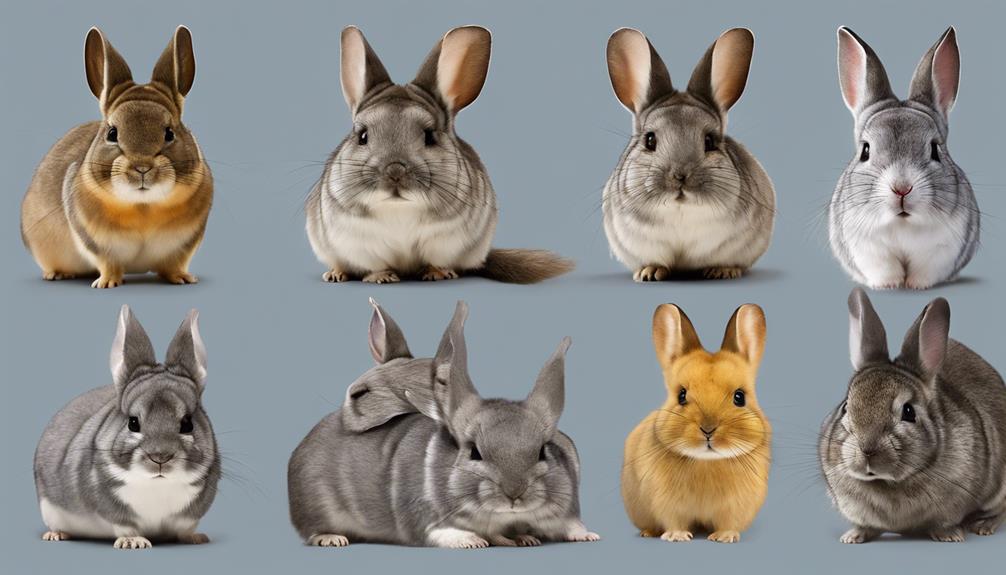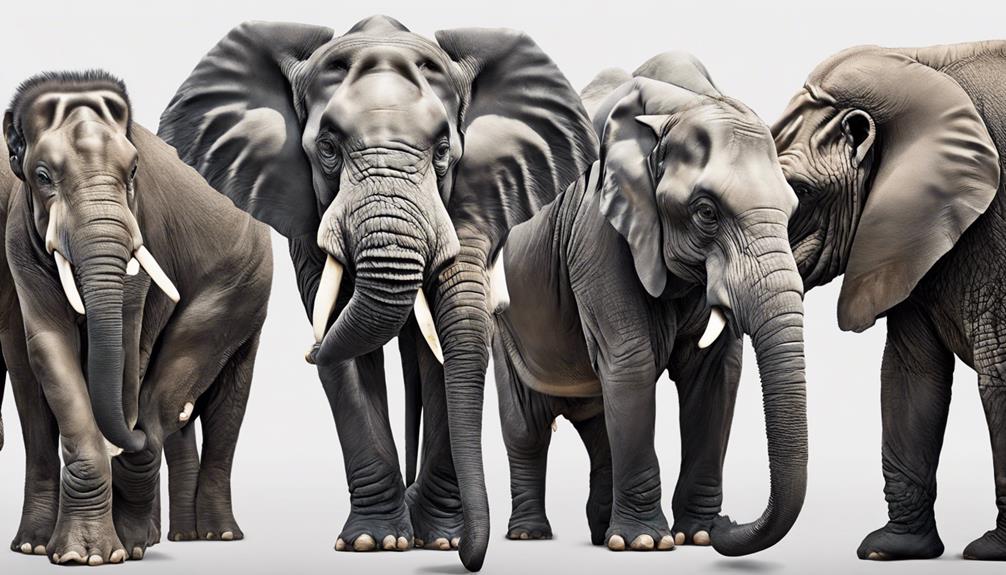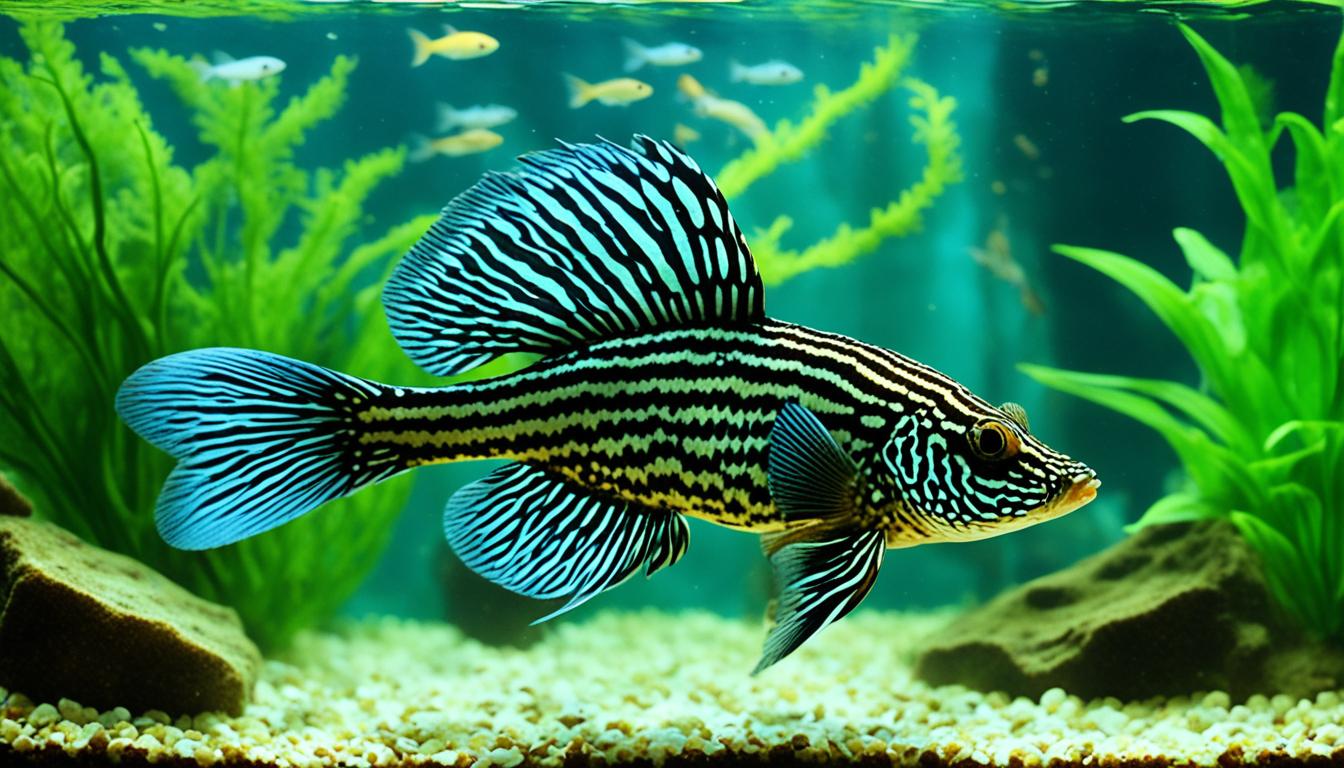Dogs wag their tails to communicate various emotions, expressing everything from joy and excitement to fear and submission. A high, fast wag signals happiness, while a tucked tail indicates anxiety. The direction of the wag can also matter; right-side wags often show comfort, and left-side wags may reveal tension. Understanding these signals enhances your bond with your furry friend. There's so much more to discover about your dog's emotions through their tail movements and body language.
Key Takeaways
- Tail wagging is a primary means of communication for dogs, expressing a range of emotions and intentions.
- Fast tail wags often indicate positive feelings like joy and excitement, while slow, hesitant movements suggest insecurity.
- The direction of tail wagging matters: right-side wags are linked to positive emotions, while left-side wags indicate negative feelings.
- A high, stiff tail position can signal aggression, while a lowered tail typically shows fear or submission.
- Dogs without tails use vocalizations, body posture, and facial expressions to communicate their emotions effectively.
Understanding the Purpose of Tail Wagging

While you might think a wagging tail simply means a dog is happy, it actually serves as a complex communication tool.
Dogs use their tails to convey a range of emotions, from excitement to submission. The speed and position of the wagging tail are essential indicators of how your dog feels. For instance, fast wagging often signifies positive emotions, while a lowered tail can indicate fear or submission.
This visual communication helps dogs express their feelings over distances, reducing potential conflicts. Notably, research shows that right-sided tail wagging correlates with positive emotions, while left-sided wagging is linked to negative feelings.
Over time, domestication has led to more expressive tail movements in dogs compared to their wild ancestors, enhancing their ability to communicate.
Emotions Conveyed Through Tail Movements

When you watch a dog wag its tail, you can learn a lot about how it's feeling. A friendly dog often shows joy with a wide, sweeping wag, while a tucked tail might signal fear or submission.
On the other hand, a stiff, vertical tail can indicate aggression, so it's important to pay attention to these movements.
Happy and Friendly Signals
Dogs communicate a range of emotions through their tail movements, and understanding these signals can deepen your connection with them.
When you see a happy dog, pay attention to the tail's position and speed. Here are some key signals to recognize:
- Full sweeping movements indicate excitement and approachability.
- Energetic side-to-side wagging often comes with play bows, signifying a friendly greeting.
- Right-sided tail wagging is linked to positive emotions, showing comfort in social interactions.
- A relaxed tail wagging gently demonstrates the dog's willingness to engage without aggression.
Signs of Fearfulness
Understanding a dog's tail movements not only reveals their happiness but also their fearfulness. When dogs communicate fearfulness, you might notice a tail that's lowered or tucked between their legs, signaling submission and non-aggressive intent.
Sometimes, a fearful dog might wag the tip of their tail tightly, which reflects anxiety rather than excitement. Slow or hesitant tail wagging can indicate uncertainty, emphasizing their discomfort in a situation.
Additionally, a stiff body posture and wide eyes often accompany these tails, indicating they want to avoid confrontation. By observing these tail movements alongside other body language cues, you can accurately interpret a dog's negative emotions, ensuring safer interactions with your furry friend.
Aggression and Threat Indicators
While observing a dog's tail movements, you might notice that aggression and threat can be clearly communicated through their posture and wagging style.
Aggressive dogs usually display a high, stiff tail position with rapid, forceful wagging, signaling potential danger. A vertical and rigid tail indicates readiness to confront or defend against perceived threats.
Conversely, when a dog feels threatened, it may lower its tail while wagging the tip tightly, showing submission or fear.
Keep these points in mind:
- High, stiff tail indicates aggression.
- Rapid tail wagging can signal agitation.
- Lowered tail suggests submission or fear.
- Tail wagging direction matters: left for negative feelings, right for positive ones.
Understanding these signals helps you gauge a dog's emotional state effectively.
The Significance of Tail Position and Speed
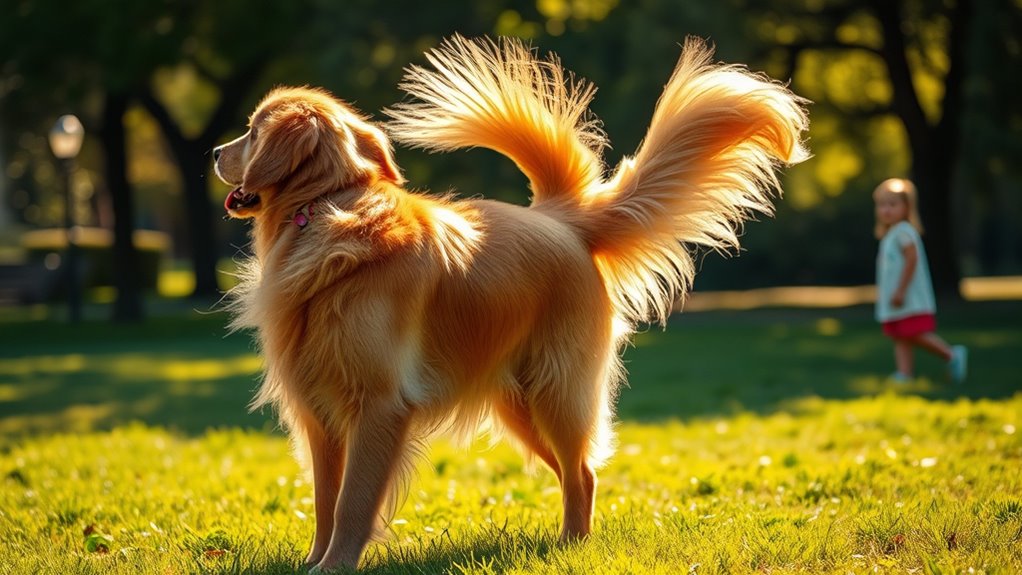
Tail position and speed play an essential role in revealing a dog's emotional state. When you observe a tail held high, it often signals excitement or readiness, while a lowered tail indicates submission or fear.
The speed of wagging is equally telling; fast wags typically show positive emotions like joy and friendliness, whereas slow, hesitant movements may suggest insecurity. If you see rapid tail movements, it might correlate with heightened arousal or even aggression.
Understanding these cues helps you interpret your dog's feelings accurately. Remember, the direction of the wagging also matters—right-side wags are usually associated with positive emotions, while left-side wags can indicate negative feelings like fear or stress.
Right-Sided vs. Left-Sided Tail Wagging

When you observe a dog wagging its tail, the direction it moves can reveal much about its emotional state.
Tail wagging to the right side is often a sign of positive emotions, like happiness and excitement, indicating that your dog feels relaxed and comfortable.
Tail wagging to the right signifies your dog's joy and comfort, reflecting a state of relaxation and happiness.
In contrast, left-sided tail wagging can suggest negative emotions, such as fear or anxiety, showing that your dog may be stressed or threatened.
- Right-sided wagging indicates joy or comfort.
- Left-sided wagging reflects fear or anxiety.
- Brain hemisphere activity influences emotional responses.
- Understanding tail direction enhances communication.
Communication Methods in Dogs Without Tails
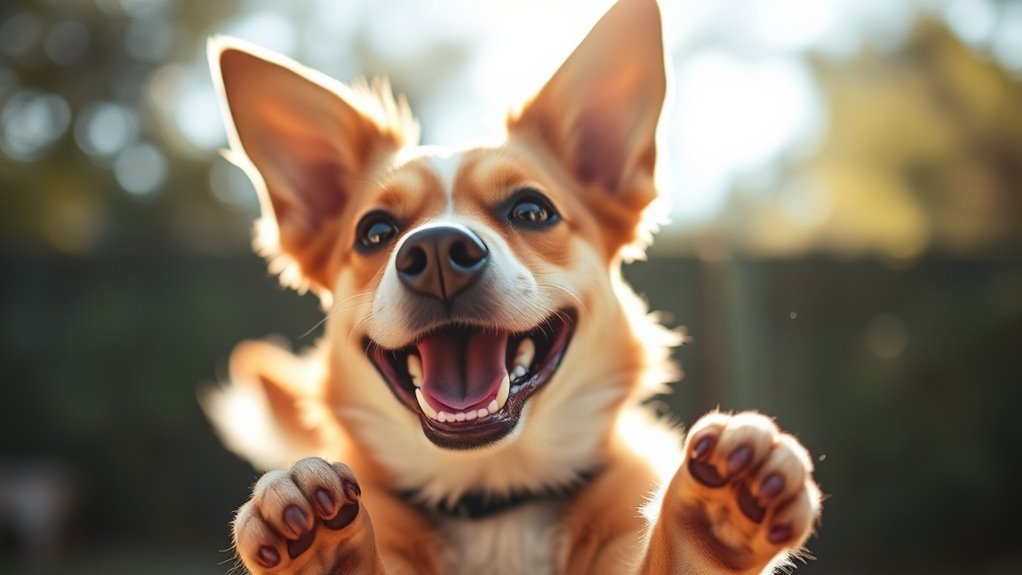
Dogs without tails still manage to communicate effectively, relying on a variety of methods to express their emotions and intentions. These dogs often use vocalizations like barking, growling, and howling to convey feelings.
Their facial expressions play an essential role as well; changes in eye position and lip movements can signal how they're feeling in different situations. Additionally, body posture is key—whether they're cowering or standing tall, it provides context for their emotional state.
Ear position also helps communicate their intentions, indicating emotions from aggression to relaxation. Even without tails, these dogs might lip-lick or shift their weight to further express themselves and avoid misunderstandings in social interactions.
Enhancing Human-Dog Communication Through Body Language
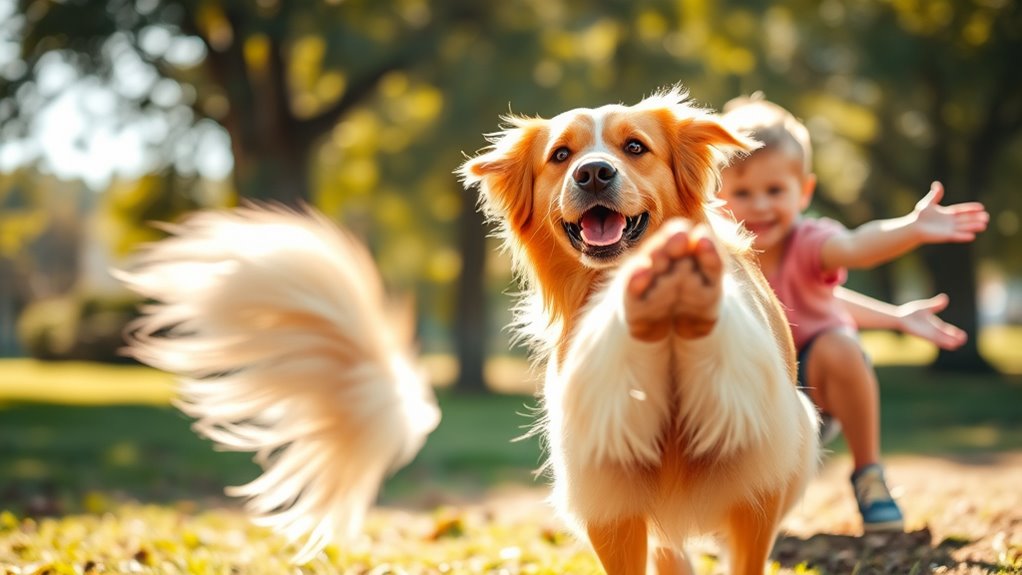
Effective communication between you and your dog goes beyond just verbal cues; it heavily relies on understanding body language.
Tail wagging plays an essential role in interpreting your dog's emotional state. By observing tail positions and movements, you can enhance your interactions:
- A relaxed tail indicates calmness.
- A high, stiff tail may suggest aggression.
- Right-tail wagging signals positive emotions, while left indicates negative ones.
- Consider your dog's overall posture and ear position for a complete picture.
Frequently Asked Questions
Are Dogs Actually Happy When They Wag Their Tail?
When you see a dog wagging its tail, you might wonder if it's truly happy. While a wagging tail often signals joy, it can also express other emotions.
You'll need to pay attention to the dog's body language, like its posture and facial expressions. A fast, energetic wag usually indicates happiness, but a slow wag might suggest uncertainty or stress.
What Is the Real Reason Dogs Wag Their Tails?
You might think dogs wag their tails just because they're happy, but it's more complex.
They actually wag their tails to communicate a variety of emotions. The speed and direction of the wag reveal their feelings, whether it's excitement, curiosity, or even fear.
By observing these nuances, you can better understand your dog's emotional state and strengthen your bond.
Why Do Dogs Wag Their Tail When You Look at Them?
When you look at your dog, you might notice its tail wagging enthusiastically.
This isn't just a random movement; it signals your dog's desire for interaction and connection. Your gaze encourages them to engage, and their wagging tail reflects their positive emotions.
It's a way for your dog to communicate its happiness and readiness to bond with you.
Why Does My Dog Wiggle When She Sees Me?
When your dog wiggles like a little bundle of joy upon seeing you, it's her way of throwing a happy parade!
She's expressing pure excitement and affection, welcoming you with open paws. That wiggling dance often means she can't wait to play or cuddle with you.
The more enthusiastic the wiggle, the more thrilled she's to see you. It's her adorable way of making sure you know just how much she loves your company!
Conclusion
In the world of dogs, tail wagging is like a language of its own, painting emotions in vibrant strokes. By paying attention to how your furry friend wags their tail, you can reveal a deeper understanding of their feelings and needs. Remember, each wag tells a story—whether it's excitement, anxiety, or affection. So, next time your pup greets you with a wagging tail, listen closely; it might just be the sweetest message they have to share.



